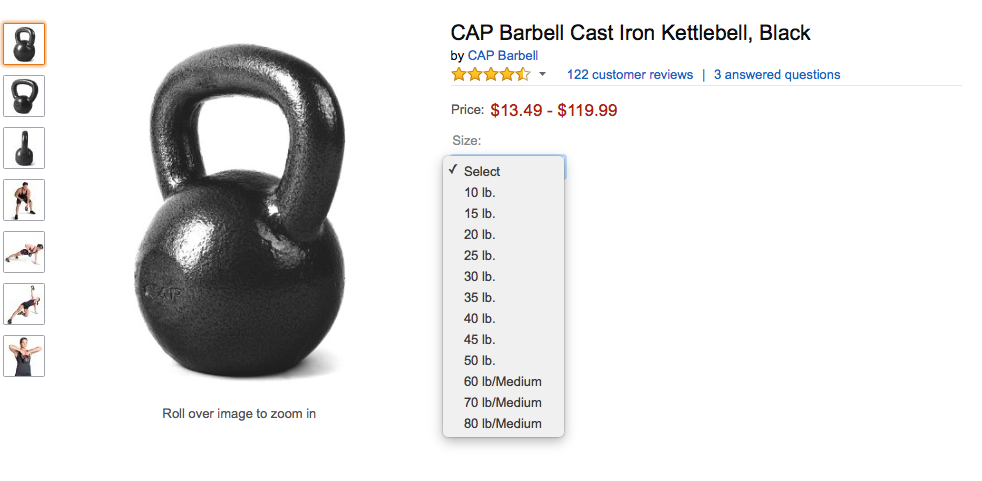Fixing Challenges, Problems and Issues with e-Commerce Sites
Fixing Challenges, Problems and Issues with e-Commerce Sites
Once you’ve narrowed down your niche selection to a few of the most promising themes, you can begin to dig a little deeper. And that’s what this article is all about – getting into the nitty-gritty of the challenges you’ll be facing.
Often, when we start doing research for profitable niches, they all seem shiny and exciting like top automotive websites. We tend to put blinders on about the obstacles we’ll be faced with until they are coming straight towards us and can no longer be ignored.
Now while challenges can’t be avoided, they can be proactively dealt with when you have a strategy in place and know what to look for when selecting a niche. Here we’ll look at how to identify obstacles within your niche, and how to develop a plan of attack.
Product selection and data
We're going to start with products because when you finally dig into your niche, you're going to have to get to know all aspects of them, as well as how your customers react to them. So let’s break products down into three categories: Complexity, price, and selection.
Complexity:
When it comes to choosing a profitable niche, many people turn to the complex product because they’re often the most untapped and in need of an authority figure. However, one of the biggest challenges is making it easy to purchase and understand for your customers.
Because complex products have multiple variations, you’ll have a lot of data to gather and apply (check out our big data series if you want to learn more about where to find complex data). You’ll also have to be sure to make continual updates as products change.
In the instance where you sell a product that can be installed by the customer, be prepared to write tutorials and create videos that let people know how to do it. Remember, when you sell complex products, people will be there to learn as much as they are to make a purchase.
Price:
When it comes to pricing your products, you'll be faced with the challenge of staying competitive while still making a profit. When you sell items that are also on Amazon and other big-name e-commerce sites, it's important to stay close within the same range, or people will just use your site for some free advice and then buy the product somewhere else.
Here’s an example with barbells. First, we’ll look at Amazon. They start out with a less expensive price for the smallest barbell and while it goes up in price, it’s because they have more options.
Now, let’s look at Mill’s Fleet Farm. They have a similar barbell but it’s going to be a little more expensive and you have less weight options to choose from.
If you’re a loyal customer, you might pay a little more, but odds are if you’re buying online you’ll go with Amazon – especially if you’re price checking (and who isn’t these days).
Now if they offered a free five-minute tutorial on the most effective exercises with the barbell when the sale is finalized, you might be more inclined to make the more expensive purchase.
You should always make a point to have added value with the purchase if you do decide to charge more than your competitors. Think of things like a free helpline if they have installation questions, access to a detailed tutorial that comes with the shipment, or some other goodie that will make your customers life easier when the product arrives at their doorstep.
Selection:
Product selection is an essential part of the process when designing an e-commerce store or automotive shopping cart, and it can be as overwhelming as picking a niche. The goal is to start with quality products and thoroughly research them.
You want to ensure your price point is on target – and don't think that the most expensive items are going to bring in the most money. Often, you'll sell less of them, and once all of the variables are factored in, your return isn't going to be very high.
Also, don’t take on too many products because this can be overwhelming for both you and your customers. Take it one item at a time to ensure that you get all of the specs and pricing right.
SEO strategies and web design for eCommerce
Optimizing and designing an online store is challenging when you’re trying to gain (and keep) an audience. There is so much going on in the e-commerce world it’s easy for customers to get distracted or be turned off by one element of your website, so you have to be prepared.
SEO:
SEO is continually evolving, and it's challenging to keep up with the algorithm changes and innovative ways to optimize your site. Plus, with the addition of social media, you've got a full-time job on your hands.
Knowing that SEO is time-consuming and crucial to your success is going to be the best way to combat this hurdle. Schedule it into your business plan and stay on top of the best practices.
Web design:
When it comes to your web design, you need clean images, detailed and accurate descriptions, and a seamless checkout. If you have complex products, you’ll want a quick way for people to find the right components that fit their current product whether they need spark plugs for their car or a new filter for their dishwasher.
Here’s an example from Bike Bandit when it comes to finding Bridgestone tires for your bike:
However, even simple products like clothing will require that customers be able to pick sizes, colors, and other attributes.
All of this takes a good deal of time and acute attention to detail. However, don't neglect the mobile web when designing your site. Many e-commerce owners struggle with making a responsive web design and it is a step that you can't skip. Create a plan for the mobile web as well as desktop users and you'll be in good shape.
Question your e-commerce store
So far we've gone over a few categories that you'll see challenges in, but there will (of course) be more. Here are a few questions you can ask and answer to help spot those hurdles before they become bigger issues.
-
How can we differentiate ourselves from the competition?
-
How can we build trust with our audience?
-
How do our prices compare to the competition?
-
How can we evolve our marketing strategy?
-
What is our weakest link? (This could be anything from checkout to product specifications to images.)
-
How can we drive a quality audience to our site?
-
Where can we find accurate and authoritative information on our products?
-
How can we tailor our online presence for a particular audience?
Answering questions like these will give you a better understanding of the areas you are doing well in, and the places you need to focus your attention. The sooner you realize you might have a problem, the quicker you can create a plan to make improvements.

BEDSLIDE - Client Testimonial
"The best thing out of everything was that our sales went up. The new site had a better design, the checkout process was better, and ultimately achieved all of our goals. That site has been up for a year and a half and we’re very happy with it, it’s still awesome." - Jake Plappert
